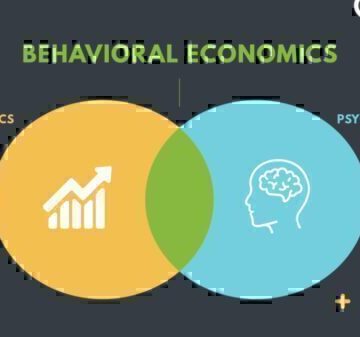With prices rapidly rising on everyday items like gas and groceries, perhaps your savings plan has gone by the wayside. You can set yourself up to save in almost every area of your life, from food to shelter and transportation. Whatever your goals are for saving – from finding money in your budget to pay off debt, to building a fund for the next chapter of your life – “bonus” savings on things like your weekly trip to the grocery store can help you get there faster. These tips will help you find more money in your budget – starting with saving at the grocery store.
# 1 – Plan Before You Shop to Save on Groceries
- Know what you have to spend: Set yourself a budget – a dollar limit – for each trip to the store or each order, and keep a running tally as you shop so you come in on budget.
- Make your grocery list: One of the most important parts of grocery shopping is pre-shopping planning. Before you go to the store, take inventory of what you already have, and make a list of what you need. If possible, plan out the meals you will prepare and check to see if you have all the necessary ingredients. Choose meals that use items that are affordable and ingredients that can be used in multiple ways – often if you can buy in quantity, you can save money overall. Plan for leftovers to take for lunch, or to eat later in the week.
- Make your list complete. A complete list is easier to stick to when you’re in the store. Plan for meals, snacks and needs that will carry you through until the next time you intend to shop. (If you shop every week, or every two weeks, buy what you need to make it that long.) Remember to also check on things like cleaning supplies, personal toiletries, or other household items you might need.
- Cross-reference your list with deals and sales: Making your list first sets you up to stick to it – stay strong and resist the temptation to buy something that’s not on your list, even if it seems like a good deal. But still take the time to compare your list with sales, coupons and specials to see if you can win a few extra savings points! Checking sales before you go will help you decide where to shop (and get the best deal).
- Eat before you shop! Shopping while hungry (or in the company of hungry and grumpy children) tempts you to stray from your list. Plus, it’s not very fun.
#2 – Shop Around – Compare Prices from Different Stores
You have tons of grocery shopping options. Looking closely at them and finding the mix that works for you can help you balance your personal preferences, the kinds of things you need, and the price you are willing to pay. You may find out that by splitting your grocery list up between several options gets you the best deals.
- Compare apples-to-apples by using the unit price as your comparison number: calculate the price per pound, ounce, or use: Price divided by pounds, ounces, uses (i.e., loads of laundry, sheets of toilet paper), etc.
- Remember to include the delivery or shipping costs for online orders versus transportation or fuel costs if you’re shopping in person.
- Check dollar stores for deals on household items.
- Research online providers that are now offering groceries in addition to household supplies. Stick to your list, and you might find ways to use them strategically to save money.
- Traditional supermarkets and superstores are familiar and convenient choices where you can compare pricing between different brands and accomplish a lot in one store.
- Bulk retailers or wholesale clubs, like Costco or Sam’s Club might be a good way to stock up on quantity for a lower per-use cost.
- Buying directly from farmers through farm markets, CSA shares (community supported agriculture) or purchasing a share of an animal might get you a lower price per pound for high-quality, fresh produce.
- Bulk retailers: Bulk stores like Sam’s Club or Costco are often able to offer lower prices for larger quantities.
- Check dollar stores for deals on household items.
- Research online providers that are now offering groceries in addition to household supplies. Stick to your list, and you might find ways to use them strategically to save money.
- Traditional supermarkets and superstores are familiar and convenient choices where you can compare pricing between different brands and accomplish a lot in one store.
- Bulk retailers or wholesale clubs, like Costco or Sam’s Club might be a good way to stock up on quantity for a lower per-use cost.
- Buying directly from farmers through farm markets, CSA shares (community supported agriculture) or purchasing a share of an animal might get you a lower price per pound for high-quality, fresh produce.
- Bulk retailers: Bulk stores like Sam’s Club or Costco are often able to offer lower prices for larger quantities.
#3 – Stick to Your List, Stick to Your List, Stick to Your List
Sticking to your list is probably the most important thing you can do to save money on groceries and hit your grocery budget. Your list is your plan, man. When you buy something else, you are spending your money on something you didn’t plan for.
Treat your list like your lifeline: stick to it and get yourself out of there! Make note of the things you wanted or felt like you needed that weren’t on your list, and when you’re safely away from temptation, re-evaluate. Did you just miss an item that should have been on your list? Or were you wanting that thing for other reasons?
#4 – Beat Your Budget: Find the Best Deals on the Things You Need
You know what you need to buy, because you made an awesome list. But how can you get the best deal on each of those items? Balance your total budget (how much you have overall to spend at the grocery store), with the best per-unit cost for each item. For example, if you only have $25 to spend, a years’ worth of toilet paper for $50 is not that helpful. But, if you can get a weeks’ worth of toilet paper for $1 less than normal, you just found $1.
- Know what things cost. Just because something is on sale doesn’t mean it’s a good deal. If you know that bananas cost 59 cents/pound, a $1 banana “sale” is not a good deal.
- Shop the sales for what you need. Watch for unadvertised specials that might get you a better price.
- Buy things in quantity when it makes sense. The larger bottle of mustard is probably a lower price per ounce than the tiny bottle. Calculate the cost per ounce and compare. If you use an item regularly, and there’s a great sale, stock up if you can do so without breaking your budget.
- Wait for something to go on sale to buy it. For something that you could wait on, you can save money by waiting for it to be discounted.
- Save money by prepping things yourself. For example, a whole chicken might be less expensive per pound than boneless, skinless chick breast. Pre-packaged items often are more costly.
- Loyalty clubs might get you a discount if you regularly shop at a particular store.
- Give the generic or store brand a try. Often they are lower in price and if you don’t like it, many stores will refund your money.
- When you check out, make sure you are being charged what you expected. If you think you are being overcharged, speak up. It never hurts to ask
#5 – Stick to Your Plan at Home, Too: Use All of What You Buy
Saving at the store is sort of like playing a video game and finding those little bonus tokens. Stretch those dollars even further by reducing or eliminating waste, so you can buy less often. And maximize your grocery purchases for the foods and supplies that meet your needs, and make your life easier, happier and healthier. Keep going!
- Process and store food to maximize shelf life. Store things in their ideal conditions to make them last as long as you need them to. If it’s something you won’t prepare for a week, freeze it to keep it fresh.
- Organize your storage so you can easily find things. Label and date things and/or store them in containers that you can easily identify, so you don’t forget about them. When you take inventory before your next shopping trip, check the corners, drawers and hidden places.
- Stick with your menu plan! Make the recipes you planned to and use the fresh ingredients you bought with your hard-earned money when they are at their peak flavor and quality. When things start to look a little wilty, salvage what you can and use them quickly.
- Make it easy to use up the food. Prep things ahead if it makes sense to store them that way. For example, if you put carrot sticks in the kids’ lunches every day, outfox the temptation to skip it on a hurried morning by prepping a week’s worth in advance. Use leftovers for your lunch, or a secondary meal, when you’re pressed for time to cook.
- Keep track and make choices to maximize your grocery-saving savvy and enjoyment. Take note of where it was difficult to stick to your plan or your budget, or where your enjoyment of the food our household supplies fell short of the cost. Pay attention to what you actually spend, and what you actually spend it on, versus what you planned for. Make adjustments and try to plan ahead for your needs as they change through the month and the seasons.
What to Do If Your Grocery Bill Is Putting You Underwater
Saving money by being savvy at the grocery store is super-satisfying. It feels awesome to find $10 or $15 every time you go that you can then put toward a financial goal, like paying off debt, or saving up for something. HOWEVER: If you find yourself paying for groceries on your credit card without the resources to pay that balance off because your bank account is empty, or if you are skipping meals or going hungry so your kids can eat, that is a different thing altogether.
Looking at your whole financial picture, learning about your different options, and making a plan for your finances can relieve a huge amount of stress and anxiety – and help you figure out how to get where you want to be. Our financial counselors will guide you through this process with kindness and help you find a path to relieving your financial stress. Financial counseling is free. We are here to help.
We Can Help You With Free Financial Coaching
Looking for additional support? GreenPath’s professional, caring Financial Wellness Experts will assist you in assessing your financial situation and guide you to create a personalized plan to achieve your goals. We work with thousands of people each week to pay off debt, improve credit and lead a financially healthy life.
GreenPath Financial Service
GreenPath, A Financial Resource
If you’re interested in building healthy financial habits, paying down debt, or saving for what matters most, take a look at these free financial tools.










